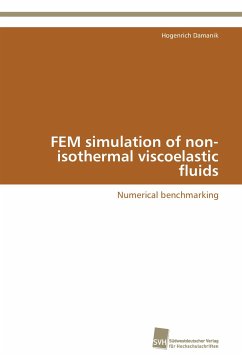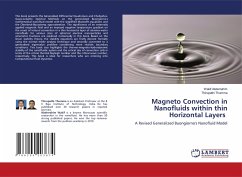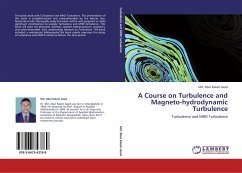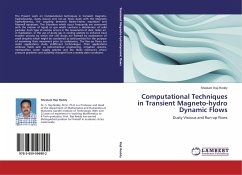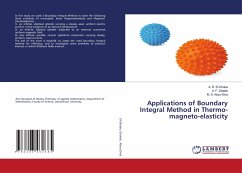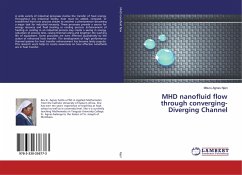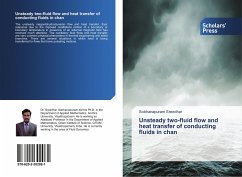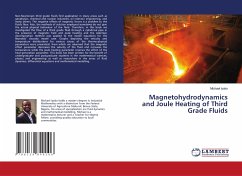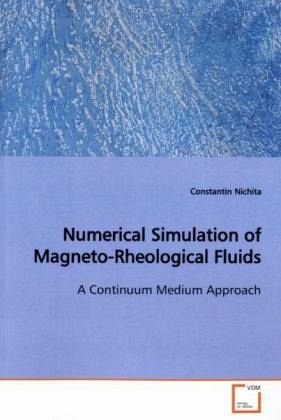
Numerical Simulation of Magneto-Rheological Fluids
A Continuum Medium Approach
Versandkostenfrei!
Versandfertig in 6-10 Tagen
32,99 €
inkl. MwSt.

PAYBACK Punkte
16 °P sammeln!
This work pertains to modern, interdisciplinaryresearch trends in nanomaterials. The author presentsa novel method with major potential for variousapplications such as ferromagnetic brakes and valves;nanosized shock absorbers, and in the medical field,heart valves and medical nanorobots. A mathematicalmodel is constructed with numerical solutionsproposed for the system of equations describing themodel. The underlying assumption is that aferromagnetic suspension can be regarded as acontinuous medium. Such an assumption was originallysuggested in Peskin s Immersed Boundary (IB) method.The IB met...
This work pertains to modern, interdisciplinary
research trends in nanomaterials. The author presents
a novel method with major potential for various
applications such as ferromagnetic brakes and valves;
nanosized shock absorbers, and in the medical field,
heart valves and medical nanorobots. A mathematical
model is constructed with numerical solutions
proposed for the system of equations describing the
model. The underlying assumption is that a
ferromagnetic suspension can be regarded as a
continuous medium. Such an assumption was originally
suggested in Peskin s Immersed Boundary (IB) method.
The IB method is coupled with Chorin s Projection
method to construct a finite differences scheme for
solving a boundary value case. The application and
the calculations are done to a first order
approximation, hence fluid flow is treated as a
Stokes flow. The integration of the rheological
behavior is implicit, through the force density
field. This method can easily extend to an entire
class of Newtonian and non-Newtonian ferromagnetic
real fluids, whose shear viscosity depend upon the
magnetic field, and upon the modulus of the strain
rate tensor.
research trends in nanomaterials. The author presents
a novel method with major potential for various
applications such as ferromagnetic brakes and valves;
nanosized shock absorbers, and in the medical field,
heart valves and medical nanorobots. A mathematical
model is constructed with numerical solutions
proposed for the system of equations describing the
model. The underlying assumption is that a
ferromagnetic suspension can be regarded as a
continuous medium. Such an assumption was originally
suggested in Peskin s Immersed Boundary (IB) method.
The IB method is coupled with Chorin s Projection
method to construct a finite differences scheme for
solving a boundary value case. The application and
the calculations are done to a first order
approximation, hence fluid flow is treated as a
Stokes flow. The integration of the rheological
behavior is implicit, through the force density
field. This method can easily extend to an entire
class of Newtonian and non-Newtonian ferromagnetic
real fluids, whose shear viscosity depend upon the
magnetic field, and upon the modulus of the strain
rate tensor.




